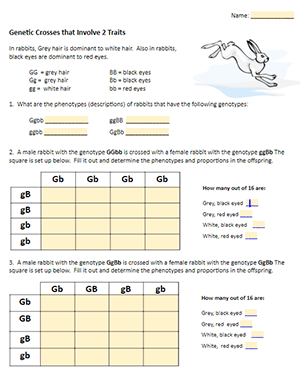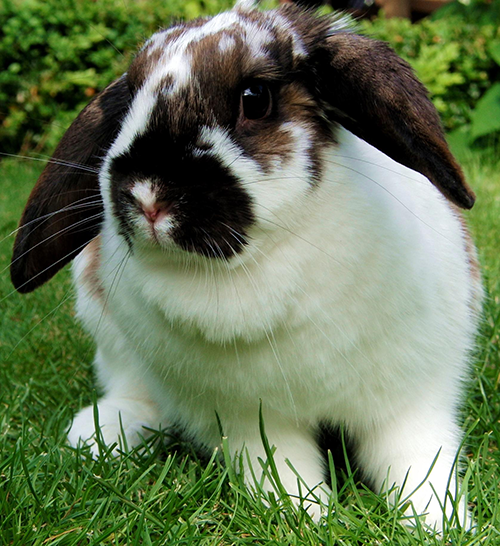
Dihybrid crosses can be challenging for students. In my regular biology classes, I usually spend time guiding students through the process of filling out Punnett squares. I scaffold activities by starting with squares that are partially filled out. Students have the most trouble determining what allele combinations go across the top and sides.
In this exercise, rabbits in the cross can be gray (G) or white (g) and have black eyes (B) or red eyes (b). The squares are 4×4 with the parent gametes already completed. Students need to only fill in the combinations found in the offspring and count the numbers. A key at the top of the page is an easy reference for determining which combinations result in which phenotypes.
On the second page, students determine the combination of genes in the parental gametes. Then they must complete a square that has not been set up for them.
Students can complete this directly on their Chromebooks and access the sheet with Google classroom. The original version is still available for paper printouts. You can save paper by assigning this version, but I find students do better on the paper version. (In fact, I think that’s true for many activities!)
For more advanced students or additional practice, another practice worksheet is available where most of the squares are not setup for the students in advance.

Note: Rabbit genetics is much more complicated than the descriptions in this worksheet. I share this page on rabbit genetics to Google classroom for students who are interested in rabbits. There are always a few!

